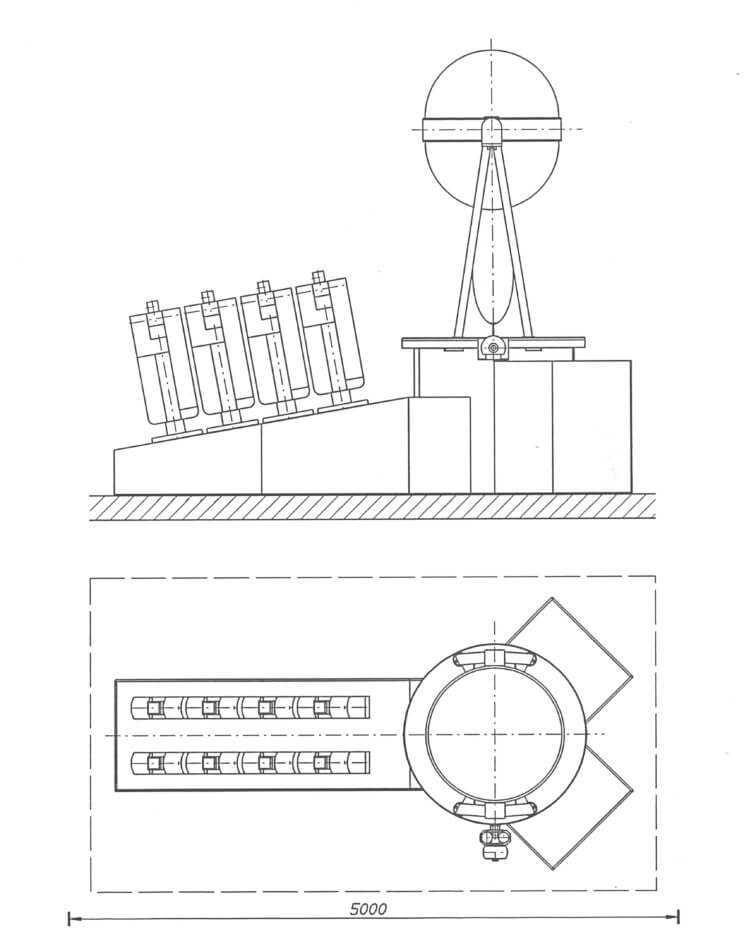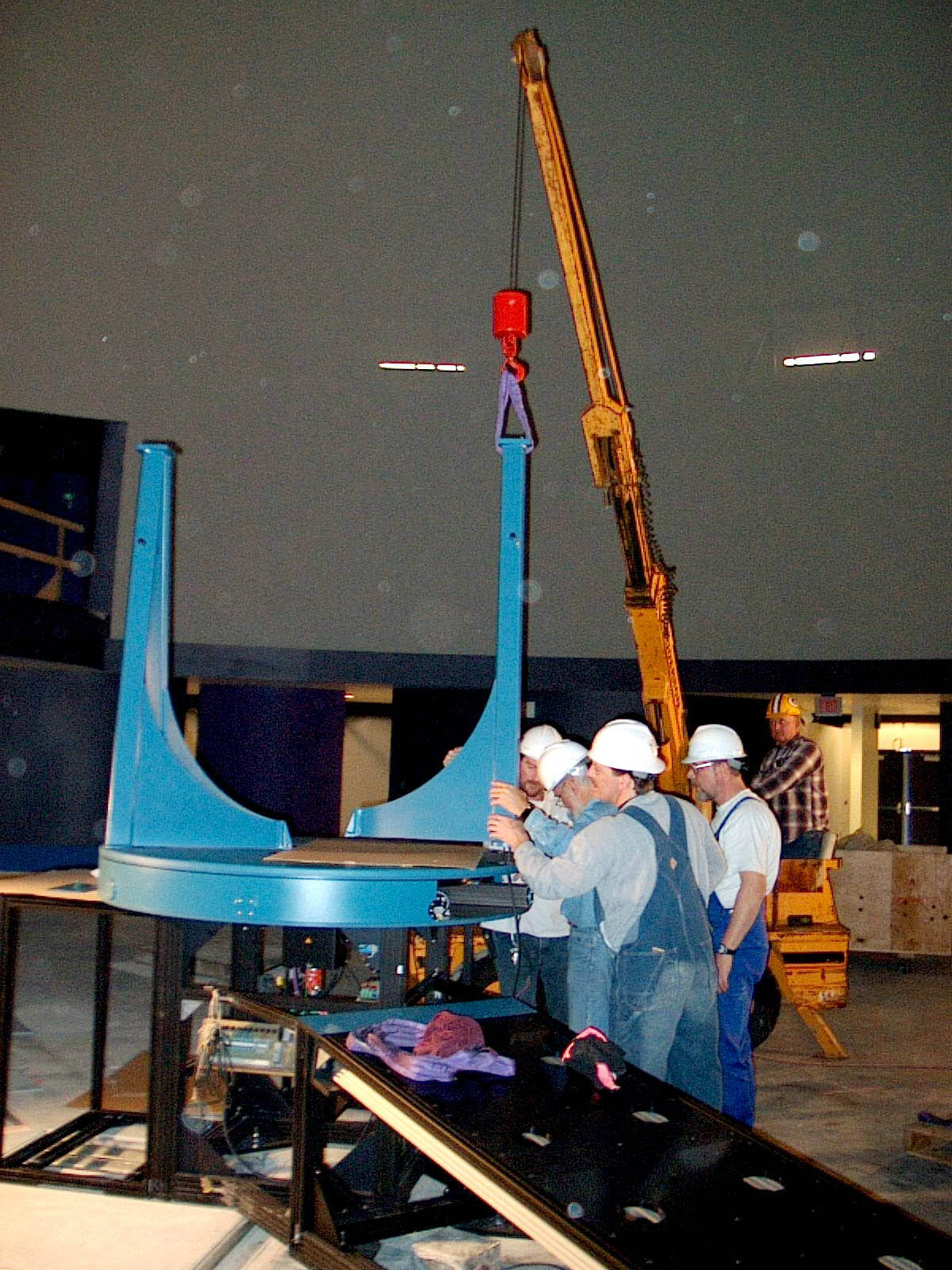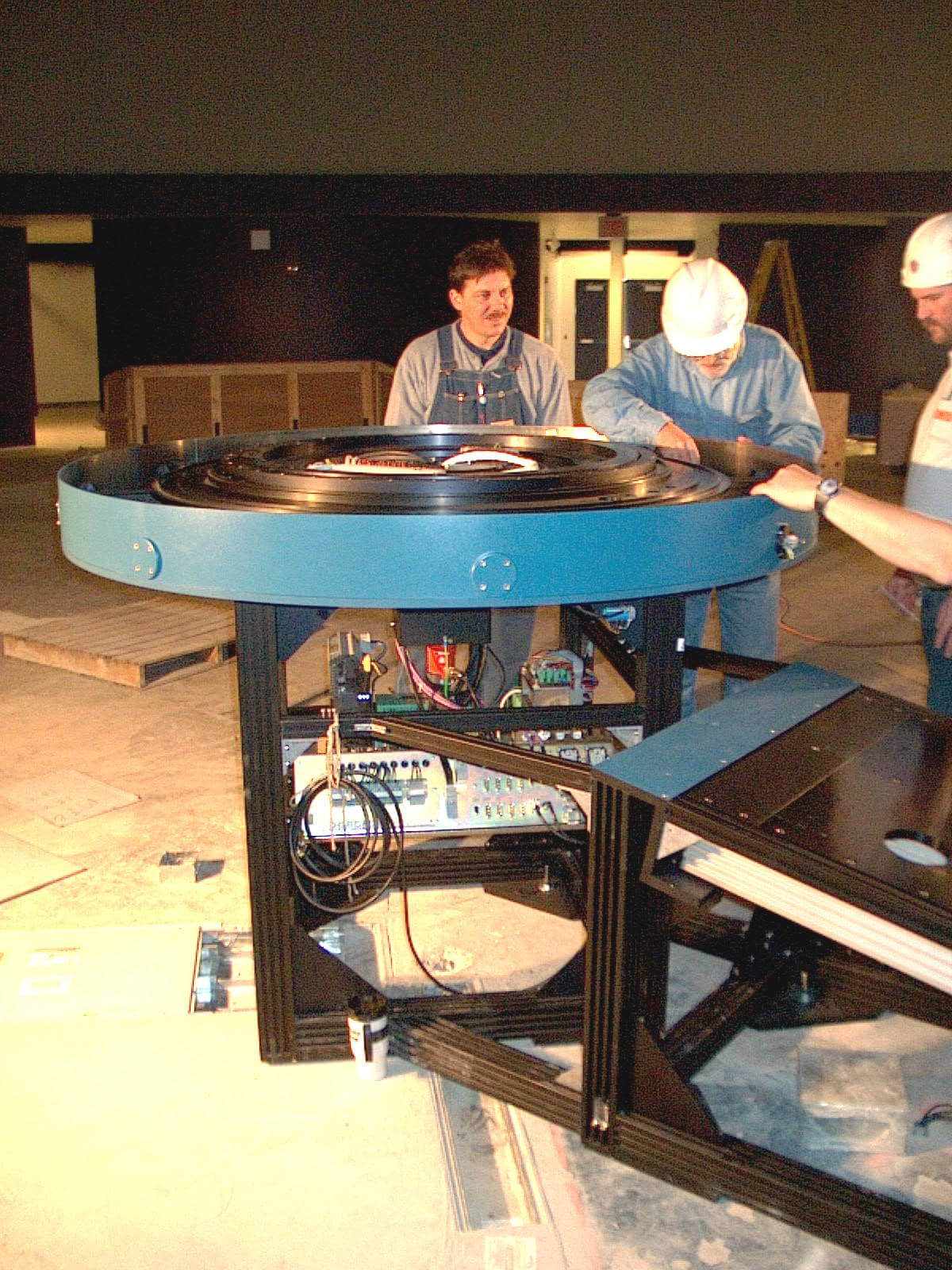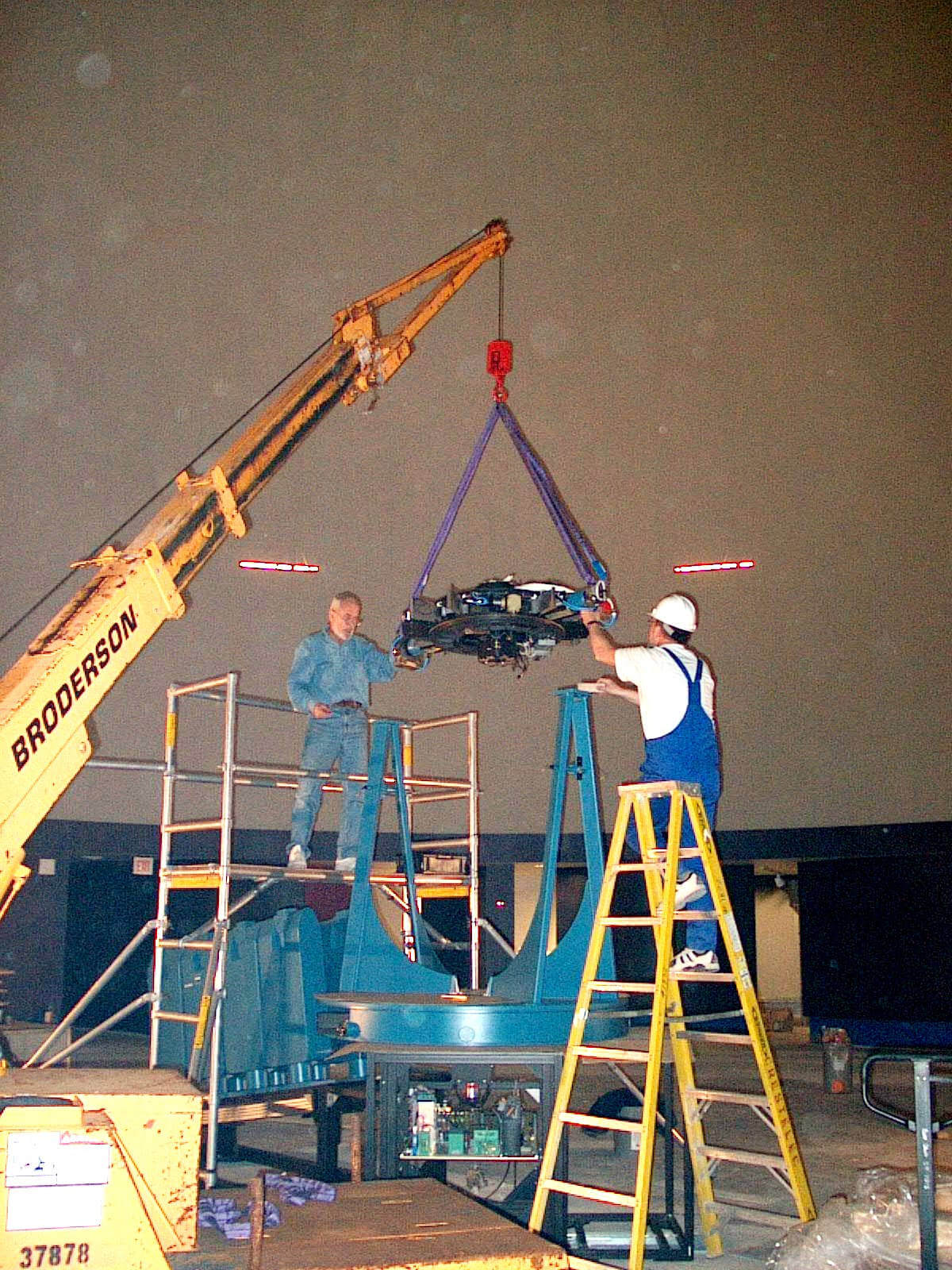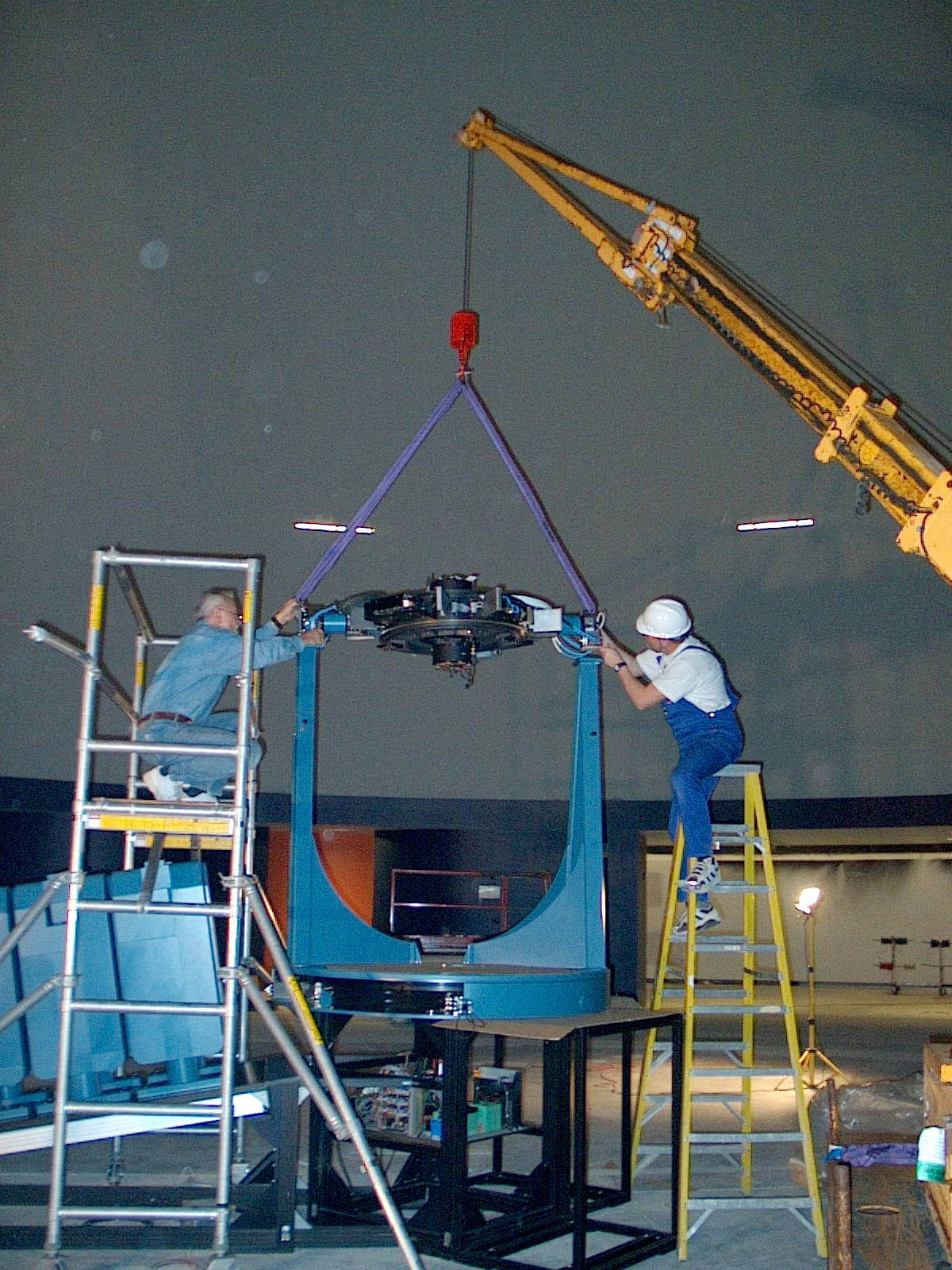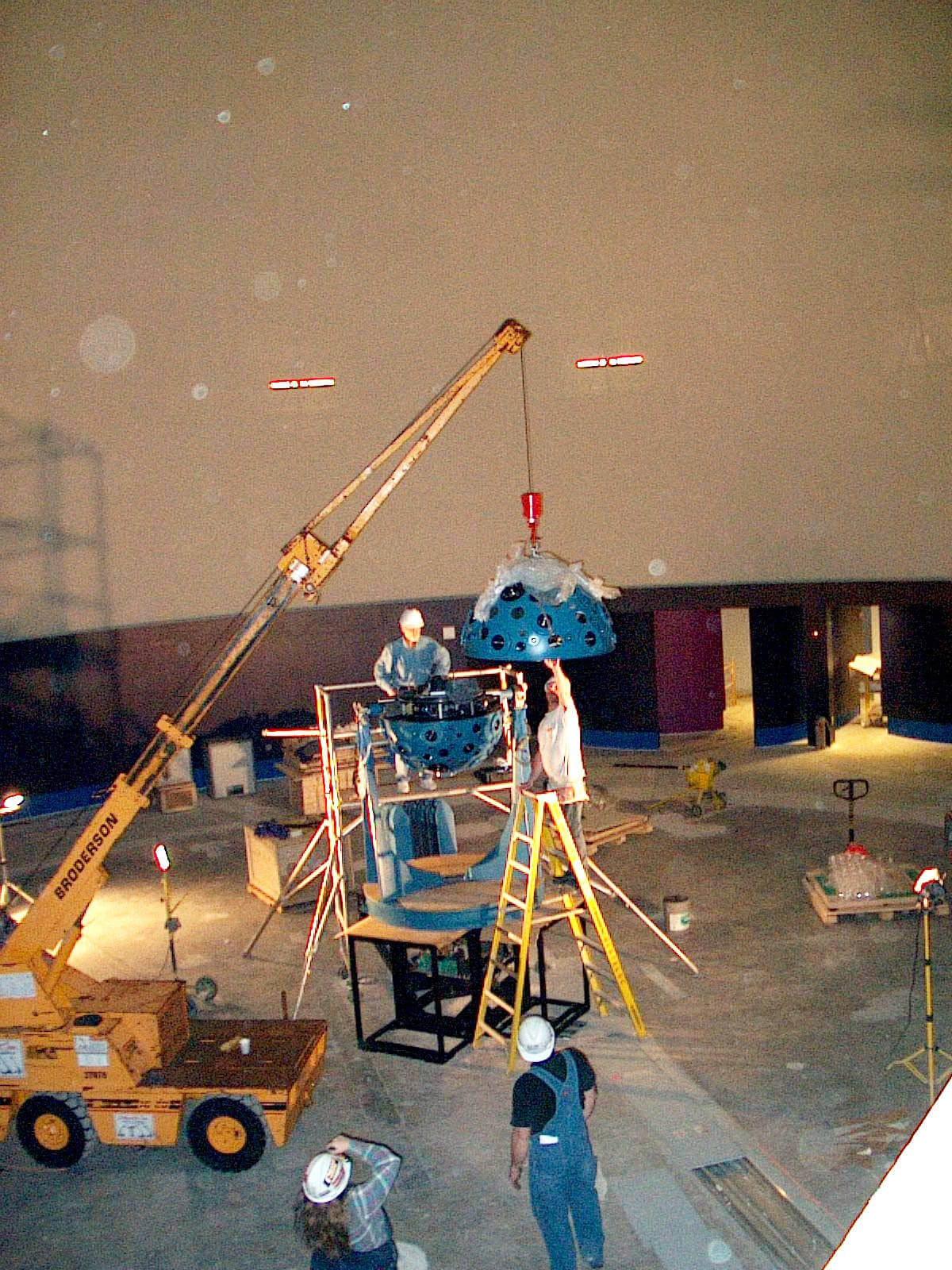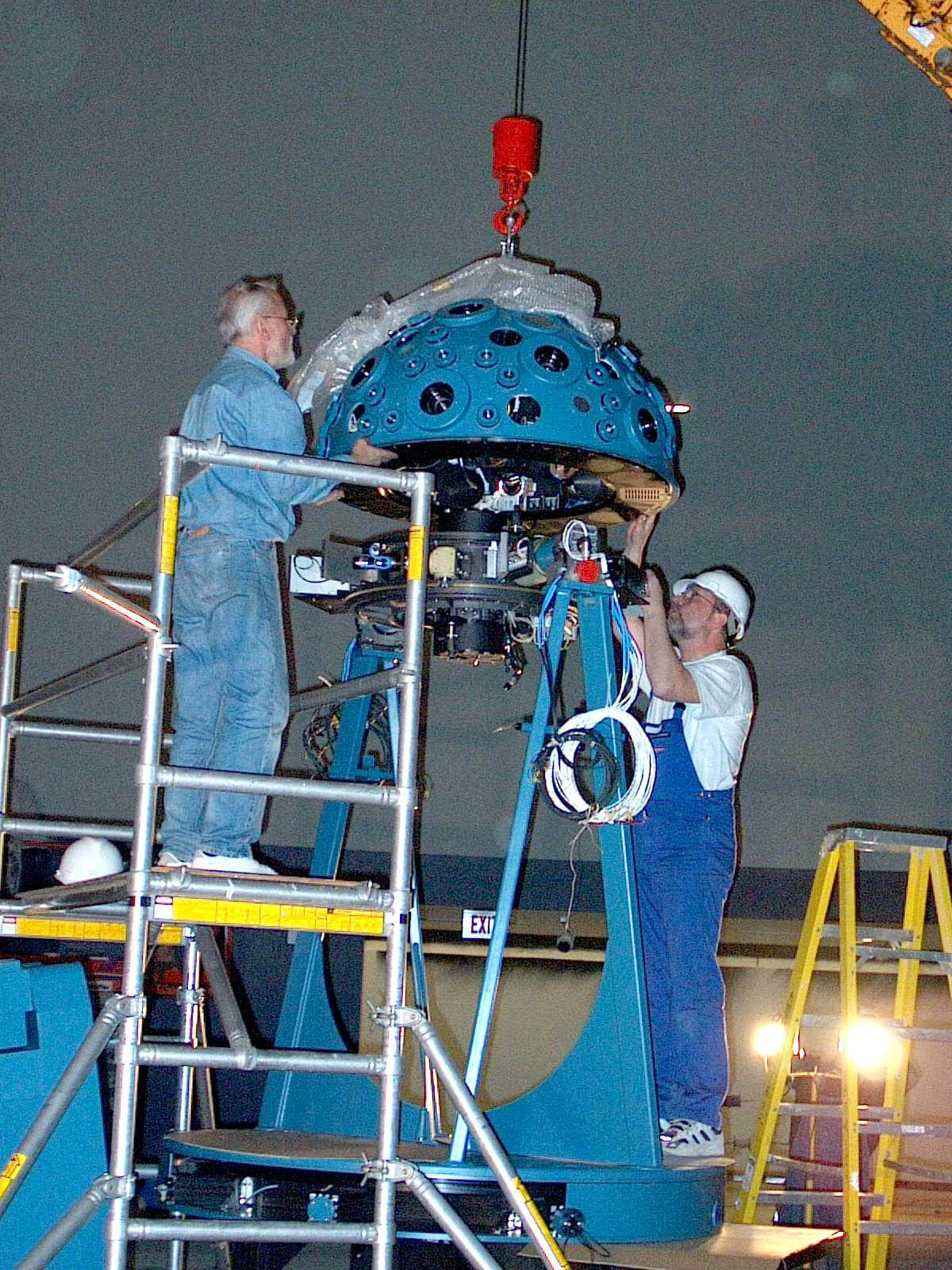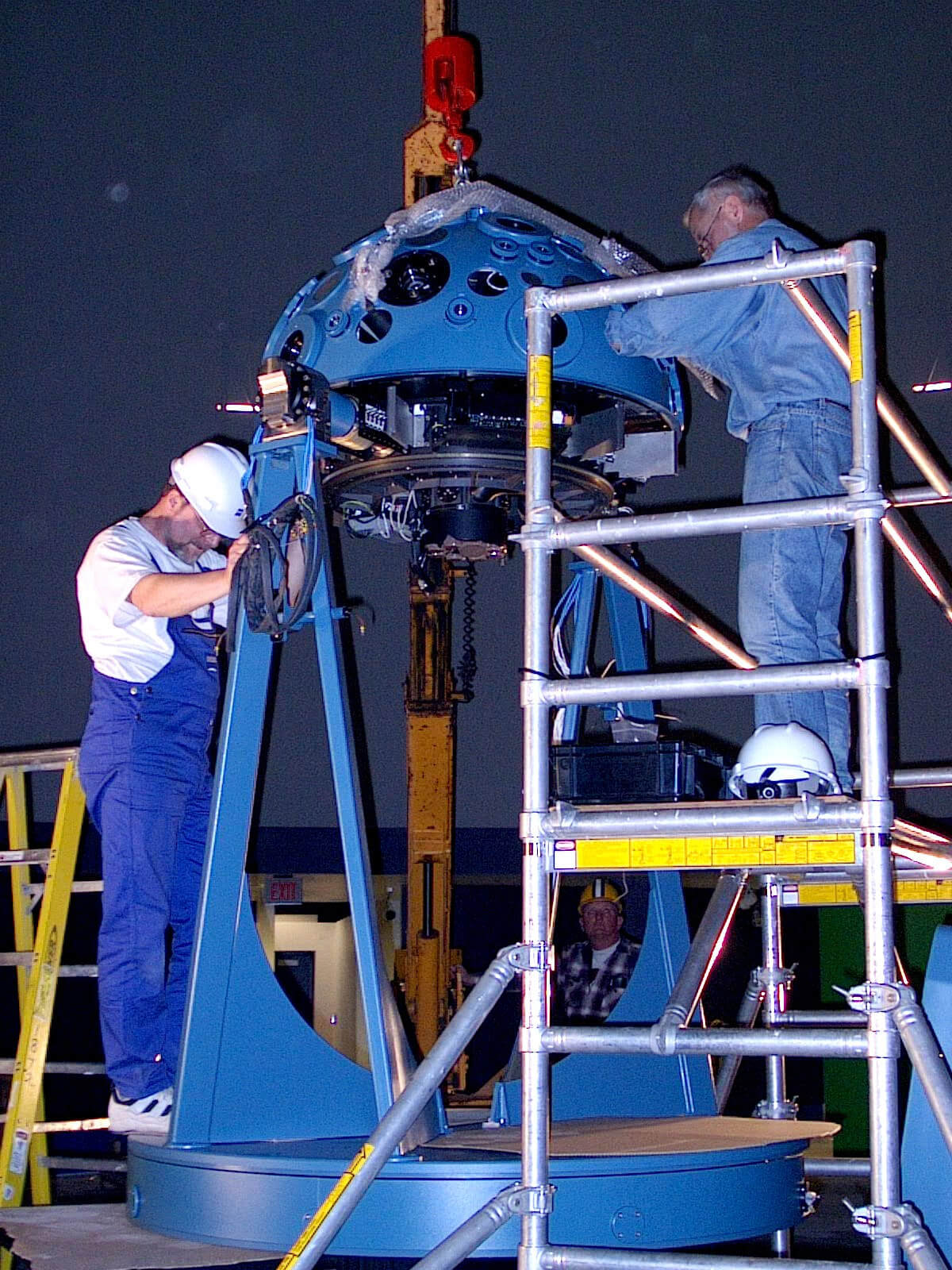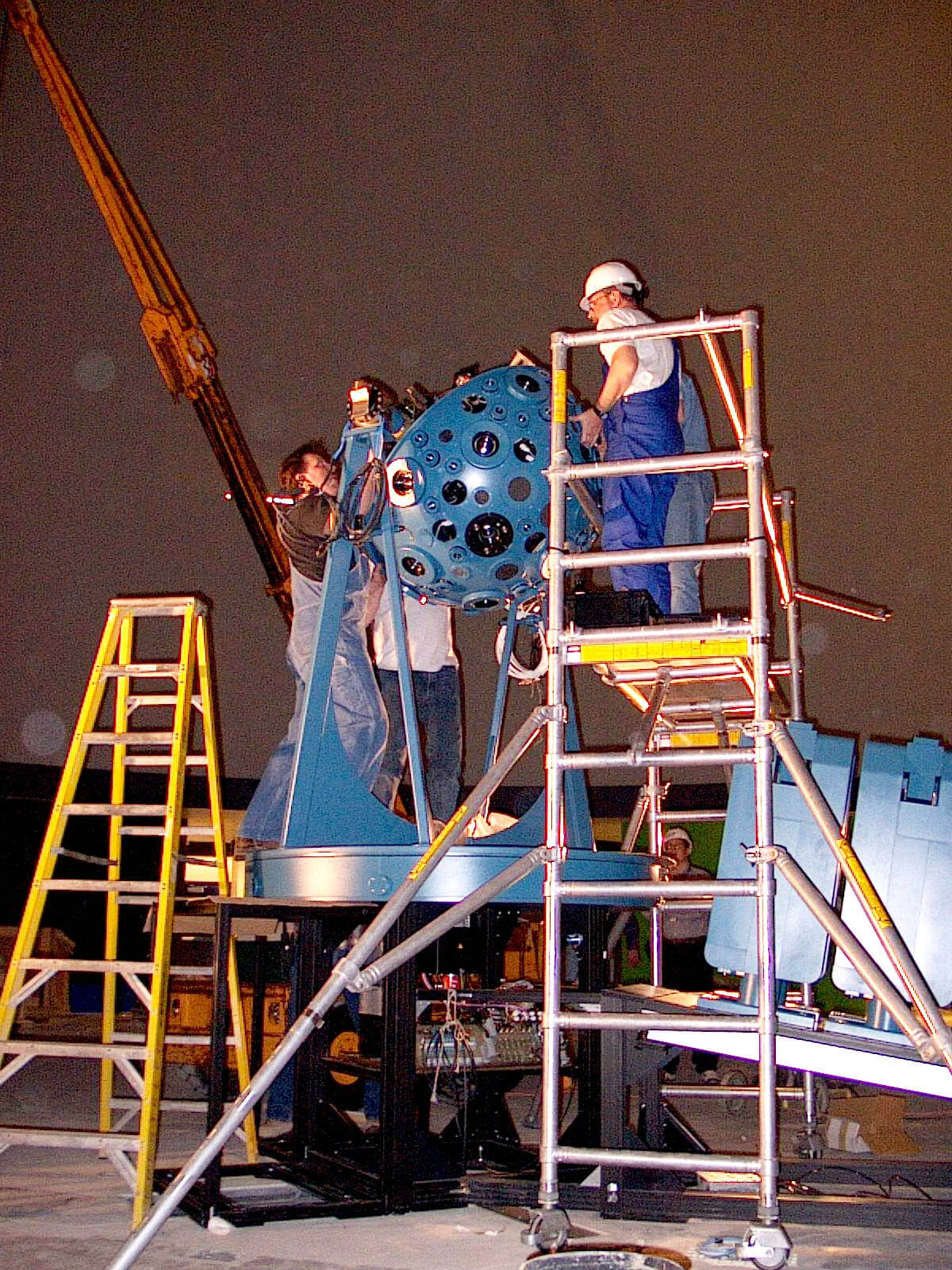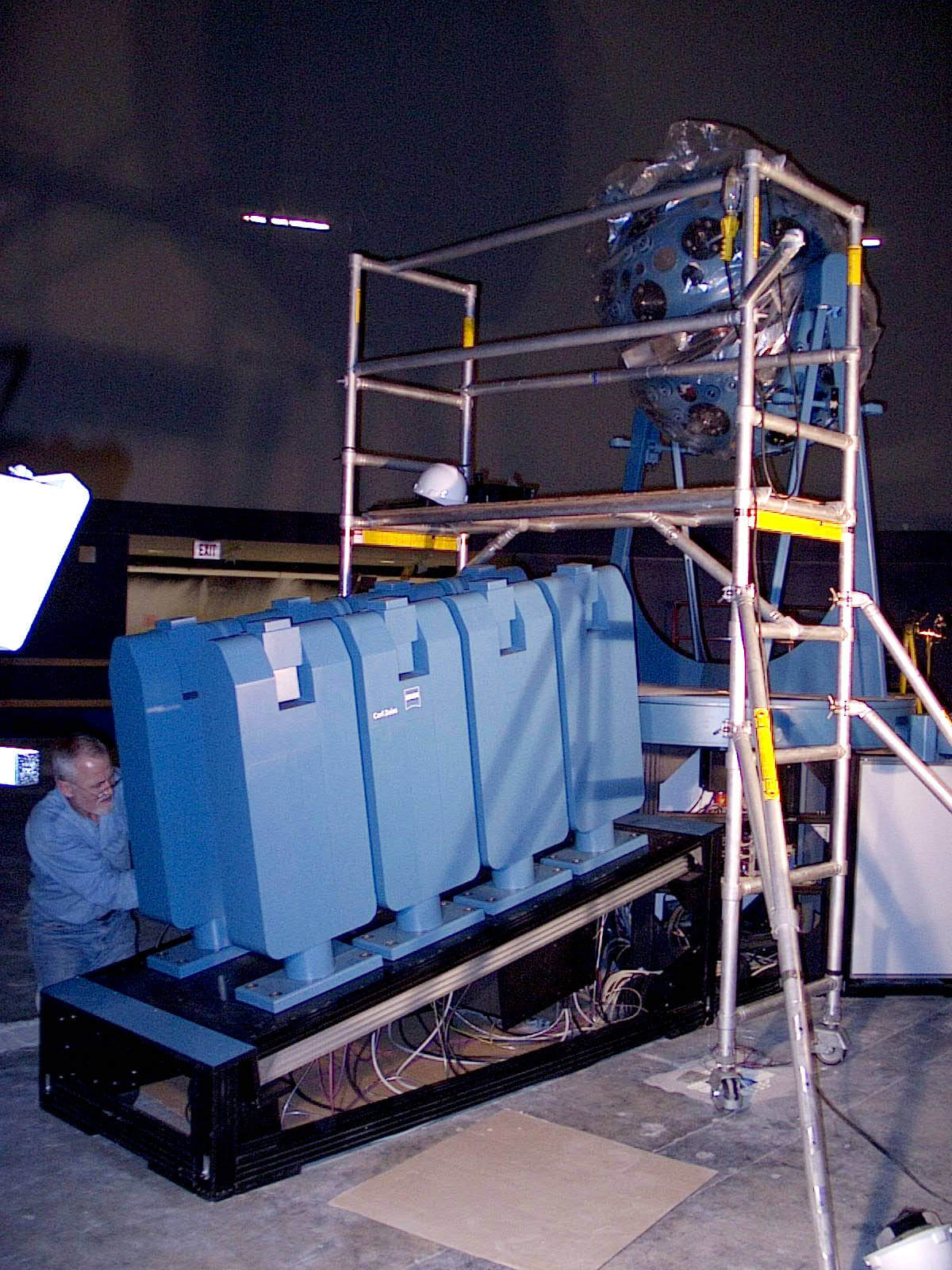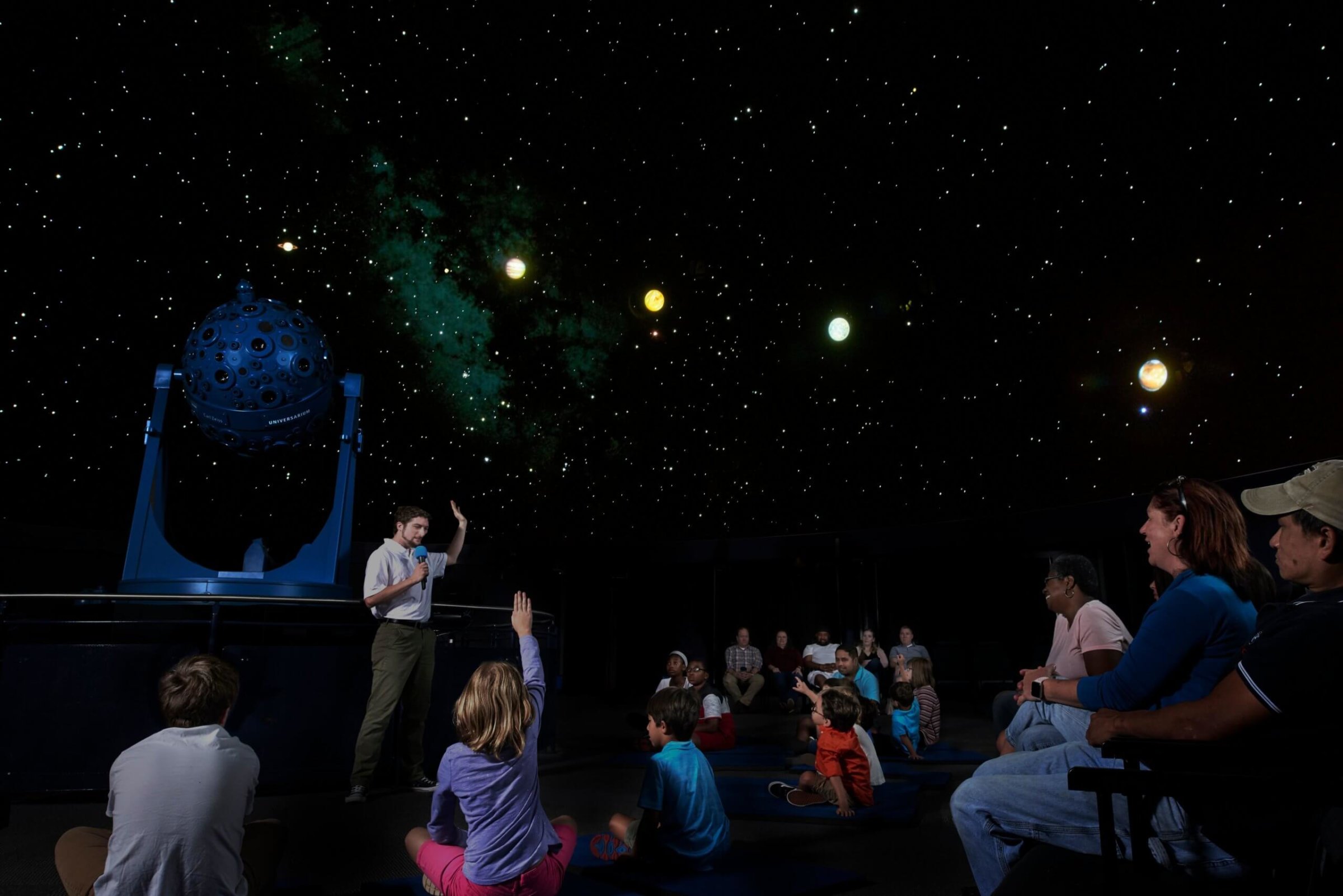
The Zeiss
Our Star Projector
The McDonnell Planetarium is home to a ZEISS UNIVERSARIUM Mark IX Star Projector. Installed in 2001, this magnificent machine is one of only three in the United States and 13 in the world!
Each Mark IX is custom-built in Germany by Carl Zeiss Jena, the famed optics company. The instrument projects more than 9,100 individual stars and other celestial objects more clearly, accurately and realistically than any other projector available. When combined with our Planetarium’s 80-foot dome, the Mark IX is able to recreate the night sky as seen from any location on Earth and at any time 10,000 years into the future and 10,000 years into the past.
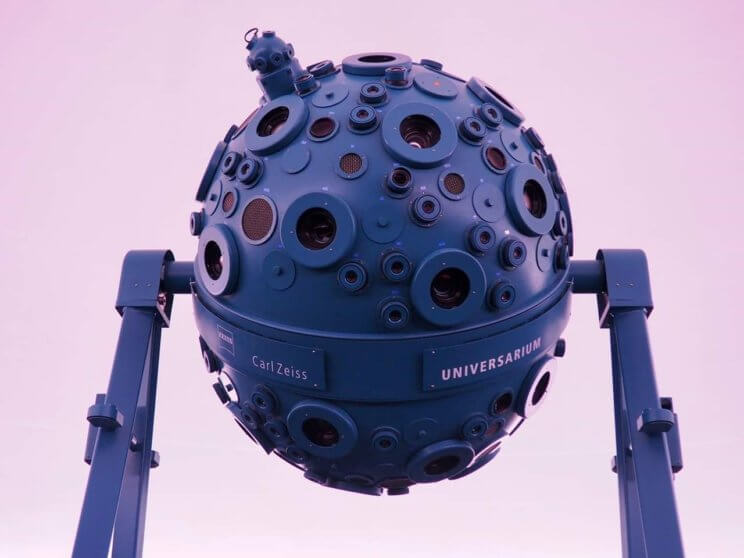
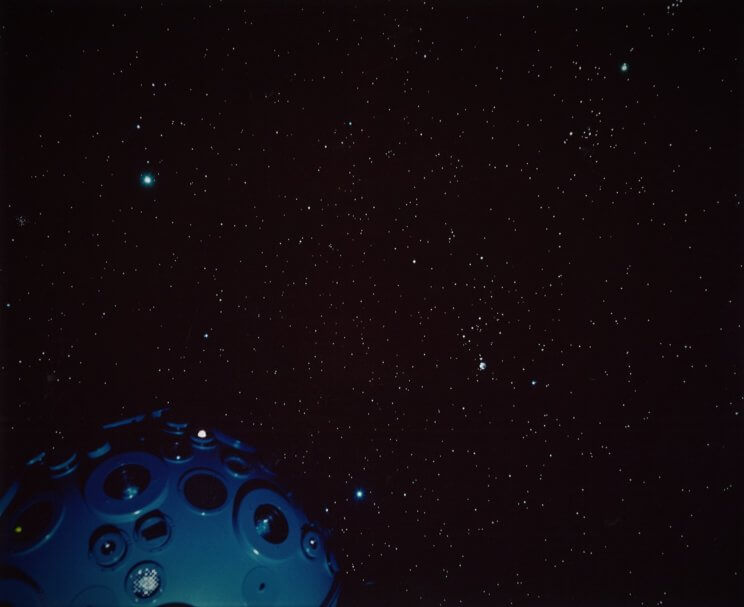
The Stars Even Twinkle!
Our Mark IX star projector allows visitors to experience the beauty of a clear, dark sky without any light pollution normally present in a city like St. Louis. We project the world’s most realistic star field including all stars and planets with their natural color, as well as star clusters, nebulae, galaxies and the Milky Way visible to the human eye. The Mark IX projector is so accurate that some features of the sky can only be seen with the aid of binoculars!
One of the unique features of our star projector is its ability to recreate the natural twinkling of stars as seen in the real night sky. Called scintillation, the Mark IX uses randomized dimming to reproduce the twinkling of starlight shimmering in Earth’s turbulent atmosphere. In addition to adding realism to our star field, this feature allows guests to more easily spot planets, which do not twinkle, from stars, which do.
How Does it Work?
The ZEISS UNIVERSARIUM Mark IX Star Projector is a sophisticated opto-mechanical instrument. This means that the starry sky is created through highly intricate glass lenses and mechanical motors rather than digital projection. An opto-mechanical star projector is able to produce a much more realistic star field than even the most advanced digital projectors available today.
Our instrument can be separated into two main parts: the “Star Ball” and the projectors for Solar System objects. The Star Ball produces more than 9,100 individual stars as well as the Milky Way and numerous deep sky objects. These projections are powered by specialized LED lamps that are both bright and energy-efficient. Light from these LEDs is transmitted via a web of individual fiber optics to 32 high-aperture projectors that reproduce a section of the celestial sphere. Each projector contains a star plate with hand-placed holes representing the accurate position of stars based on data from NASA. The Star Ball also contains more than 70 smaller projectors that produce didactic projections of constellation figures and various other astronomical representations.
In front of the Star Ball are eight projectors that look almost like mailboxes. These projectors can be programmed to simulate members of the Solar System such as the Sun, Moon, planets, comets and more. Each projector contains a library of images capable of projecting close-up views of the planets and other auxiliary effects. With these projectors, we are able to simulate eclipses, planetary conjunctions, passing of the International Space Station and more.
